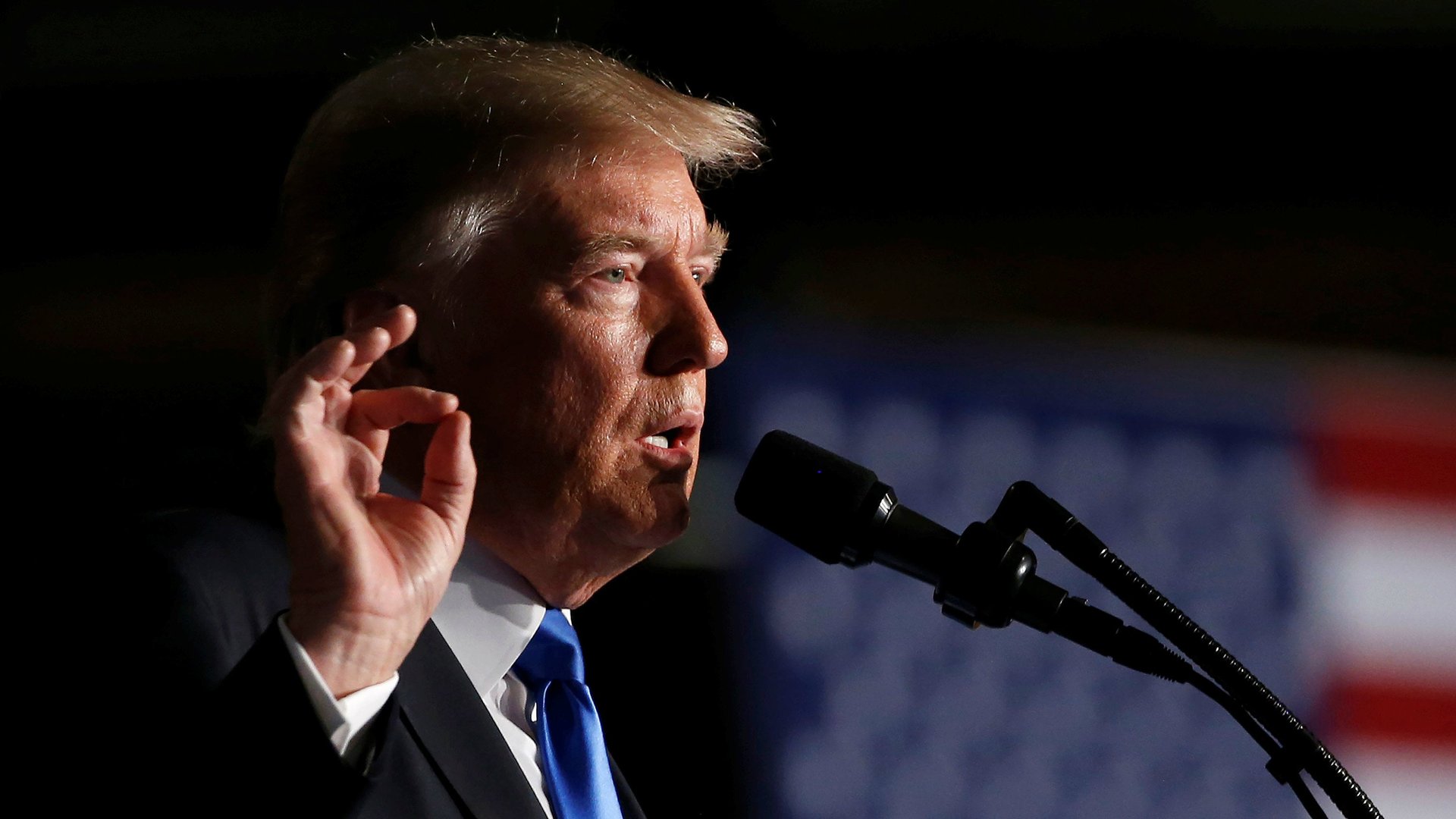Trump’s Afghanistan strategy won’t end human rights violations among immigrant contractors
On Aug. 21, Donald Trump, frustrated with the lack of progress by US forces in Afghanistan, announced a not-so-new approach to the “war on terror.” Trump lauded this strategy as a “dramatic” shift, when in reality this policy, as New York Magazine’s Jonah Shepp noted is, “not all that different from what his predecessor pursued or from what his opponent would have had she won.”


On Aug. 21, Donald Trump, frustrated with the lack of progress by US forces in Afghanistan, announced a not-so-new approach to the “war on terror.” Trump lauded this strategy as a “dramatic” shift, when in reality this policy, as New York Magazine’s Jonah Shepp noted is, “not all that different from what his predecessor pursued or from what his opponent would have had she won.”
Though Trump didn’t mention it, this “new” strategy means a continued reliance on private security contractors, particularly “third-country” contractors used as cheap labor by private security companies, such as DynCorp, in Afghanistan. With over 25,000 contractors hired with Department of Defense funds, there are almost three private contractors for every one US soldier in Afghanistan. This reliance comes with an immense human cost, one that is rarely spoken about.
For those who aren’t familiar, American and international companies hire a veritable shadow army of contractors from poorer countries such as Nepal, Sri Lanka, and Bangladesh. These companies range from fairly well-known notorious private security companies, to less known, massive companies, like Supreme, which feeds American troops in Afghanistan. The workers for these companies are not monitored by the US or host country governments, leaving them extremely vulnerable to exploitation, unlike their soldier counterparts.
Tens of thousands of contractors who serve in Afghanistan are from these “third-party” countries, as highlighted in a report released this week by the Costs of War Project at Brown University’s Watson Institute for International and Public Affairs. These contractors are the underbelly of the American military complex abroad, serving as guards, cleaners, and in crucial other support roles, like maintaining supply convoys. While it was often assumed by soldiers and US policy makers that I interviewed that these contractors in more civilian-esque roles are in less danger in warzones than soldiers, there is little evidence to support this.
In fact, what I found while interviewing approximately 250 international contractors in Nepal, India, Turkey, the UK, and the US was that these workers were extremely vulnerable to exploitation and dangers that soldiers in similar areas are not exposed to, ranging from nefarious traffickers to company officials who fail to report injuries. Companies deny workers visas and other paperwork, essentially imprisoning them on bases. Anyone leaving is subject to imprisonment by the Afghan police—a state that allows companies to push them to work long hours in dangerous and exploitative conditions. Workers from countries like Nepal, who have no diplomatic representation in Afghanistan, have no one to support them in such instances. Interviewing a small percentage of the Nepali contractors who had worked in Afghanistan, I spoke with contractors who had been robbed and kidnapped.
Even if these human rights issues are not enough to sway the Trump administration, lawmakers should be concerned, as America’s over-reliance on contractors has shown little evidence of helping win the “war on terror.” Sixteen years into the war in Afghanistan, relying on over 110,000 contractors at the high-water mark, the US has already spent billions on private security contracts with poor results. The special inspector general for Afghan reconstruction has found cases of tens of millions of dollars given to contractors ending up in enemy hands. Furthermore, some of the few instances that gained contractors international media attention, such as the 2007 killing of Iraqi civilians by Blackwater contractors in Nissour Square, seriously set back efforts to win so-called “hearts and minds.” The US has seen how difficult it is to depend on private contractors, yet continues to rely on them in conflict zones and research has only gradually begun to expose some of the egregious ways that these workers are treated.
This lack of information is not by chance.
Since companies are primarily concerned with maximizing their profits, not providing stability the way the US military is, they are incentivized to hire the least trained workers, to work them the maximum number of hours possible, and provide them with a minimal amount of support. Contractors I interviewed described the various corners cut by contracting companies when it came to training and equipping their workers. I spoke with workers who were unable to fire back during a Taliban attack since the company had so few guns—they were forced to share them. In other cases, Nepali contractors were forced to guard fuel convoys that were essentially stealing fuel for a corrupt Afghan official. This is not a formula for stabilizing Afghanistan.
The number of contractors in Afghanistan increased in the first quarter of 2017. This number will increase again as American troop levels increase and demand more support. There is little evidence that any of this is adequate to shift the military calculus, yet Trump’s “new” Afghanistan strategy will result in an uptick civilian and migrant worker deaths, all while putting more money in the hands of nontransparent companies, and further masking the true cost of America’s longest war.